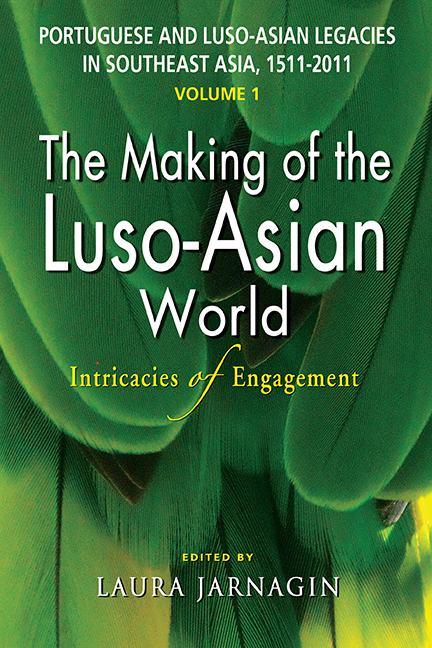 Portuguese and Luso-Asian Legacies in Southeast Asia, 1511–2011, vol. 1
Portuguese and Luso-Asian Legacies in Southeast Asia, 1511–2011, vol. 1 Published online by Cambridge University Press: 21 October 2015
This book, the first of two volumes, is the outgrowth of an international, interdisciplinary conference entitled “Portuguese and Luso-Asian Legacies in Southeast Asia, 1511–2011” that was held in Singapore and Malacca on 28–30 September 2010, co-sponsored by the Institute of Southeast Asian Studies (ISEAS), Singapore and the Universiti Teknologi MARA (UiTM), Bandaraya Campus, Malacca, Malaysia. Major financial support for the conference came from ISEAS as well as from the Comemorações Portugal/ Asia programme of the Government of Portugal, for which we extend our sincerest appreciation.
This event was the brainchild of Ambassador K. Kesavapany, director of ISEAS, who has an abiding commitment to promoting deeper historical and contemporary understandings across societies everywhere, and particularly those that comprise the dense and complex cultural cum geographical nexus that is today's Southeast Asia. The coming of the Portuguese by sea into Southeast Asia half a millennium ago marked the opening of a major shift in relations between Asians and Europeans, one that would have a profound impact not only on this region and its peoples, but also on the course of world history. I am especially indebted to Ambassador Kesavapany for bestowing this challenging and rewarding project on me, and for the confidence he has placed in this Brazilianist to make enough of an intellectual transition from the Lusophone Atlantic world to that of the Luso-present Indian and Pacific oceans in order to do justice to this undertaking.
To save this book to your Kindle, first ensure [email protected] is added to your Approved Personal Document E-mail List under your Personal Document Settings on the Manage Your Content and Devices page of your Amazon account. Then enter the ‘name’ part of your Kindle email address below. Find out more about saving to your Kindle.
Note you can select to save to either the @free.kindle.com or @kindle.com variations. ‘@free.kindle.com’ emails are free but can only be saved to your device when it is connected to wi-fi. ‘@kindle.com’ emails can be delivered even when you are not connected to wi-fi, but note that service fees apply.
Find out more about the Kindle Personal Document Service.
To save content items to your account, please confirm that you agree to abide by our usage policies. If this is the first time you use this feature, you will be asked to authorise Cambridge Core to connect with your account. Find out more about saving content to Dropbox.
To save content items to your account, please confirm that you agree to abide by our usage policies. If this is the first time you use this feature, you will be asked to authorise Cambridge Core to connect with your account. Find out more about saving content to Google Drive.